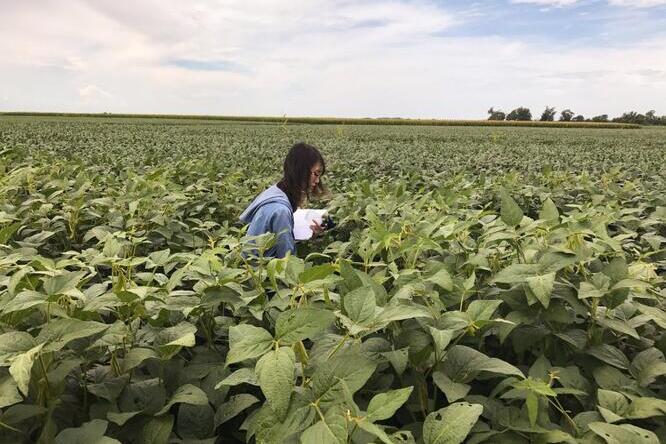非アルコール性脂肪性肝疾患の早期診断が、肝臓の傷である線維化の治療や予防を成功させる鍵になることを示す研究結果 Findings show that early screening for nonalcoholic fatty liver disease can be the key to successful treatment or prevention of advanced fibrosis, scarring of the liver
2022-11-01 カリフォルニア大学サンディエゴ校(UCSD)
研究者たちは、新しい研究で、高度な線維化を特徴とするNAFLD患者の第一度近親者は、この疾患を発症するリスクが15%であることを発見した。
本研究では、米国とフィンランドの2つの独立したコホートに登録された約400名の第一度近親者を対象とした。肝線維症は、磁気共鳴エラストグラフィーやその他の非侵襲的な画像診断法を用いて評価された。
この結果は、肝硬変または進行性線維症の患者の第一度近親者に進行性線維症のスクリーニング検査を定期的に行うことを推奨するために必要な科学的根拠を研究者に与えた。
<関連情報>
- https://today.ucsd.edu/story/study-first-degree-relatives-of-patients-with-nafld-at-risk-of-liver-disease
- https://www.jci.org/articles/view/162513
非アルコール性脂肪性肝疾患患者の第一度近親者における進行性線維化のリスク Risk of advanced fibrosis in first-degree relatives of patients with nonalcoholic fatty liver disease
Nobuharu Tamaki,Noora Ahlholm,Panu K. Luukkonen,Kimmo Porthan,Suzanne R. Sharpton,Veeral Ajmera,Yuko Kono,Shravan Dave,Aijaz Ahmed,Vinay Sundaram,Michael J. Wilkinson,Heather Patton,Hersh Gupta,Vanessa Cervantes,Christie Hernandez,Scarlett J. Lopez,Ria Loomba,Amanda Baumgartner,Lisa Richards,Perttu E.T. Arkkila,Katriina Nemes,Helena Isoniemi,Hannele Yki-Järvinen, and Rohit Loomba
Journal of Clinical Investigation Published November 1, 2022
DOI:10.1172/JCI162513

Abstract
BACKGROUND. A pilot, single-center study showed that first-degree relatives of probands with nonalcoholic fatty liver disease (NAFLD) cirrhosis have a high risk of advanced fibrosis. We aimed to validate these findings using 2 independent cohorts from the US and Europe.
METHODS. This prospective study included probands with NAFLD with advanced fibrosis, NAFLD without advanced fibrosis, and non-NAFLD, with at least 1 first-degree relative. A total of 396 first-degree relatives — 220 in a derivation cohort and 176 in a validation cohort — were enrolled in the study, and liver fibrosis was evaluated using magnetic resonance elastography and other noninvasive imaging modalities. The primary outcome was prevalence of advanced fibrosis in first-degree relatives.
RESULTS. Prevalence of advanced fibrosis in first-degree relatives of probands with NAFLD with advanced fibrosis, NAFLD without advanced fibrosis, and non-NAFLD was 15.6%, 5.9%, and 1.3%, respectively (P = 0.002), in the derivation cohort, and 14.0%, 2.6%, and 1.3%, respectively (P = 0.004), in the validation cohort. In multivariable-adjusted logistic regression models, age of ≥50 years (adjusted OR [aOR]: 2.63, 95% CI 1.0–6.7), male sex (aOR: 3.79, 95% CI 1.6–9.2), diabetes mellitus (aOR: 3.37, 95% CI 1.3–9), and a first-degree relative with NAFLD with advanced fibrosis (aOR: 11.8, 95% CI 2.5–57) were significant predictors of presence of advanced fibrosis (all P < 0.05).
CONCLUSION. First-degree relatives of probands with NAFLD with advanced fibrosis have significantly increased risk of advanced fibrosis. Routine screening should be done in the first-degree relatives of patients with advanced fibrosis.
FUNDING. Supported by NCATS (5UL1TR001442), NIDDK (U01DK061734, U01DK130190, R01DK106419, R01DK121378, R01DK124318, P30DK120515, K23DK119460), NHLBI (P01HL147835), and NIAAA (U01AA029019); Academy of Finland grant 309263; the Novo Nordisk, EVO, and Sigrid Jusélius Foundations; and the Innovative Medicines Initiative 2 Joint Undertaking under grant agreement 777377. This Joint Undertaking receives support from the European Union’s Horizon 2020 research and innovation program and the EFPIA.

